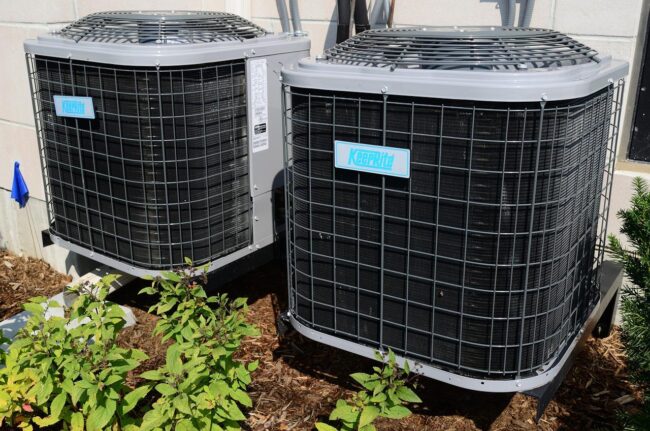
Keeping your home comfortable throughout the year can be expensive, especially in areas with varying weather conditions like Bozeman, MT. Winters in Bozeman can be harsh, with freezing temperatures requiring heavy heating use, while summers can bring warm days that make air conditioning necessary. These fluctuations put a strain on HVAC systems, leading to higher energy bills if the system isn’t operating efficiently.
Many homeowners don’t realize that their HVAC system plays a major role in energy consumption. An outdated or poorly maintained system can waste energy, causing utility costs to rise. However, improving HVAC efficiency doesn’t always mean replacing the entire system. With the right upgrades, maintenance, and smart usage, you can keep your home comfortable while reducing energy expenses.
Our article explores how an efficient HVAC system can help lower your energy bills and what steps you can take to optimize its performance.
Choosing the Right HVAC System
Selecting the right HVAC system is one of the most important factors in energy efficiency. In places like Bozeman, where winters are cold and summers are mild, having a system that can handle extreme temperatures efficiently is crucial. Whether you are installing a new system or upgrading an old one, working with a professional HVAC contractor in Bozeman, MT, ensures you get the best system for your home’s needs. Experts can help determine the right size, efficiency rating, and features that suit your local climate.
A good way to check HVAC efficiency is by looking at its SEER (Seasonal Energy Efficiency Ratio) rating. Higher SEER ratings mean better efficiency and lower operating costs. ENERGY STAR®-certified systems are also recommended because they meet government standards for energy savings.
Another factor to consider is the type of system you choose. Heat pumps are a great option for moderate climates since they provide both heating and cooling using less energy. A properly selected and installed system can lead to significant cost savings over time.
For more insights into choosing the right HVAC system, you can refer to this guide on HVAC efficiency.
Regular Maintenance for Optimal Performance
An HVAC system needs regular maintenance to function efficiently. A neglected system has to work harder to heat or cool your home, using more energy in the process. Simple maintenance tasks can extend the system’s lifespan and keep it running smoothly.
One of the easiest ways to improve efficiency is by changing air filters regularly. Clogged filters force the system to work harder, leading to higher energy consumption. Filters should be replaced every one to three months, depending on usage and indoor air quality.
Cleaning vents and ensuring that air registers are unblocked can also improve airflow. Furniture or curtains blocking vents can reduce efficiency and create uneven heating or cooling in different areas of your home.
In addition to basic upkeep, scheduling annual professional inspections is essential. A trained technician can check for issues like refrigerant leaks, faulty wiring, or worn-out components. Regular tune-ups can prevent small problems from becoming costly repairs and keep the system operating at peak efficiency.
Smart Thermostats and HVAC Efficiency
One of the simplest ways to cut energy costs is by using a smart thermostat. Unlike traditional thermostats, smart models allow you to control your home’s temperature settings remotely and create automated schedules based on your routine.
By setting the thermostat lower in the winter when you’re asleep or away and adjusting it higher in the summer when cooling isn’t necessary, you can reduce energy waste. Some smart thermostats also use sensors to detect when a home is occupied, automatically adjusting the temperature to save energy.
Many homeowners find that investing in a smart thermostat pays off quickly in energy savings. Some utility companies even offer rebates for upgrading to an energy-efficient model.
Improving Home Insulation and Airflow
A well-insulated home reduces the strain on an HVAC system. Proper insulation helps retain heat during the winter and keep cool air inside during the summer, reducing the amount of work the HVAC system has to do.
Sealing gaps and cracks around windows, doors, and ductwork can also prevent air leaks. Drafts force the HVAC system to work harder to maintain the desired temperature, increasing energy use. Simple steps like adding weather stripping to doors and caulking around windows can make a noticeable difference in energy efficiency.
Ceiling fans are another useful tool for improving airflow. In the summer, they help circulate cool air, reducing the need for excessive air conditioning. In the winter, reversing the fan direction can push warm air downward, making rooms feel warmer without increasing heating costs.
For more details on improving home insulation, check out this guide on energy-efficient home improvements.
Alternative Energy Solutions for HVAC Systems
For homeowners looking for long-term energy savings, alternative energy solutions can be an excellent investment. Geothermal heating and cooling systems use the earth’s stable temperature to regulate indoor climate, reducing energy consumption significantly. Although installation costs can be high, these systems provide long-term savings and lower environmental impact.
Another option is solar-powered HVAC systems. Solar panels can be used to power heating and cooling units, cutting electricity costs and reducing reliance on the grid. Many states offer incentives and tax credits for homeowners who install solar energy solutions, making them a viable option for those looking to go green.
Hybrid HVAC systems, which combine traditional heating and cooling methods with renewable energy sources, offer a balance between cost and efficiency. These systems automatically switch between energy sources based on demand, ensuring maximum savings while maintaining comfort.
Wrapping Up
Reducing energy bills with an efficient HVAC system is possible with the right approach. By choosing an energy-efficient system, performing regular maintenance, using a smart thermostat, improving home insulation, and exploring alternative energy solutions, homeowners can cut energy costs while maintaining a comfortable home.
Taking small steps, such as replacing air filters, sealing air leaks, and scheduling professional HVAC inspections, can have a big impact over time. Investing in a smart thermostat or upgrading to an ENERGY STAR®-certified system can also lead to noticeable savings.
Ultimately, improving HVAC efficiency also extends the life of the system and reduces environmental impact.
